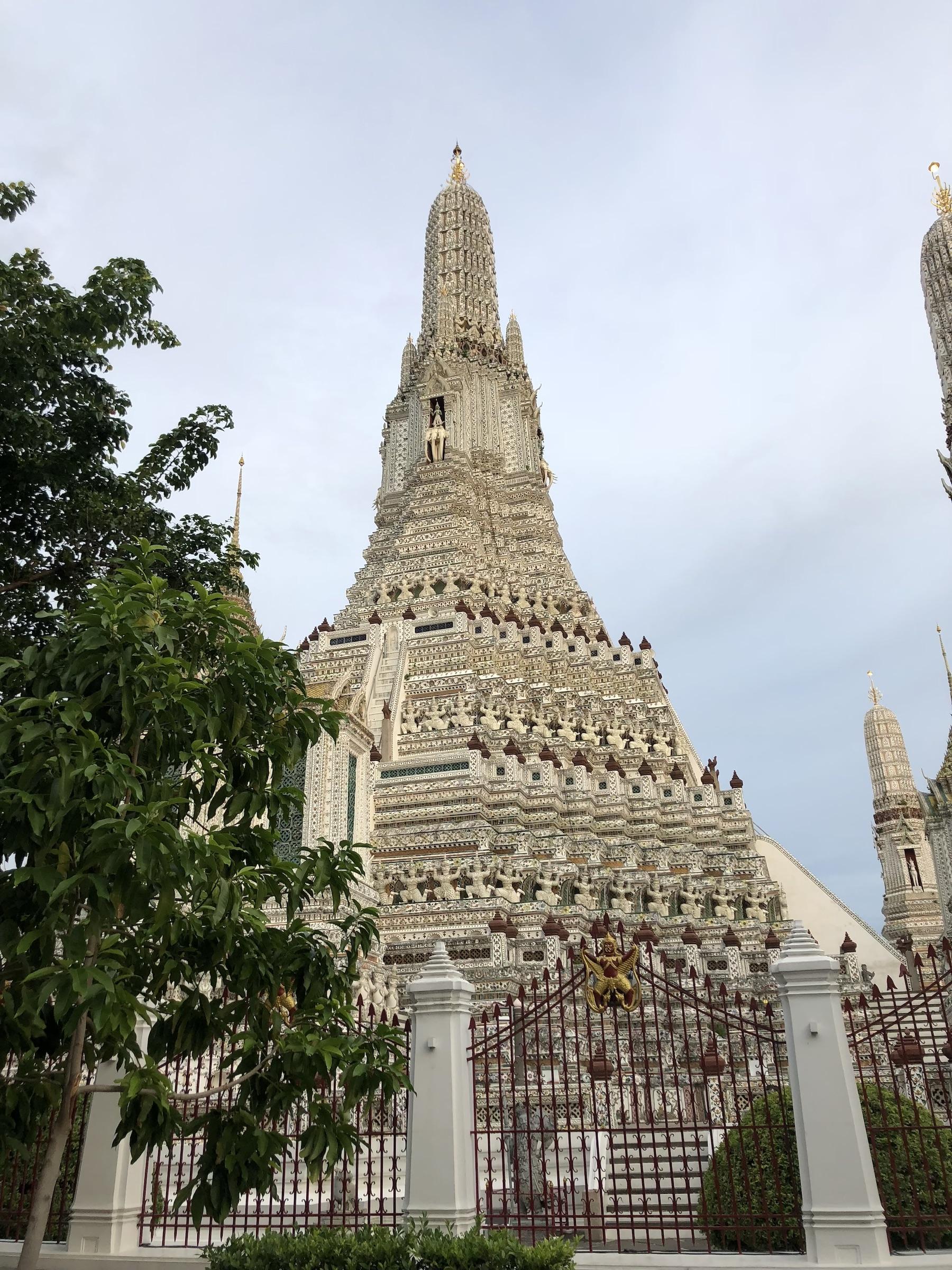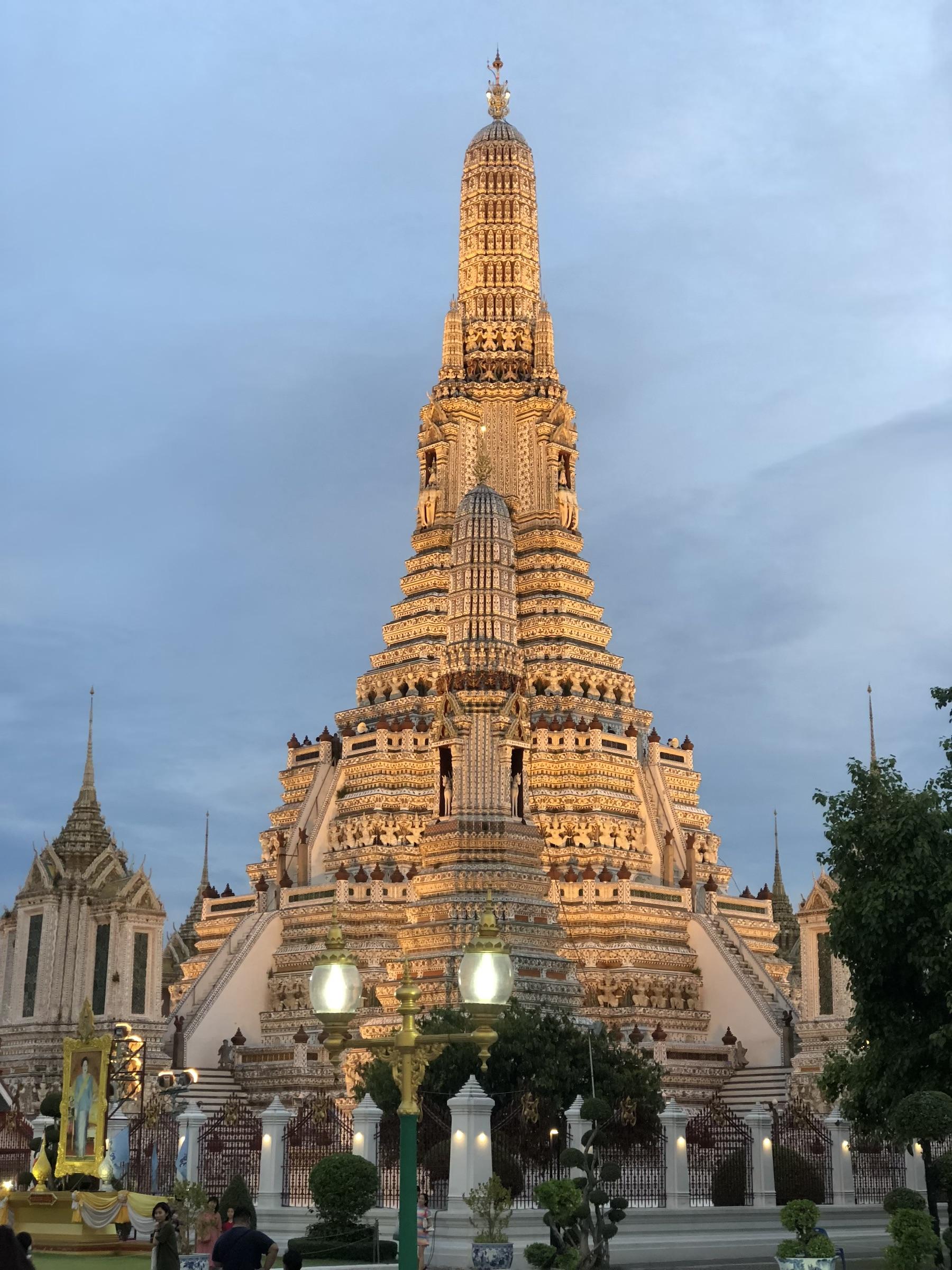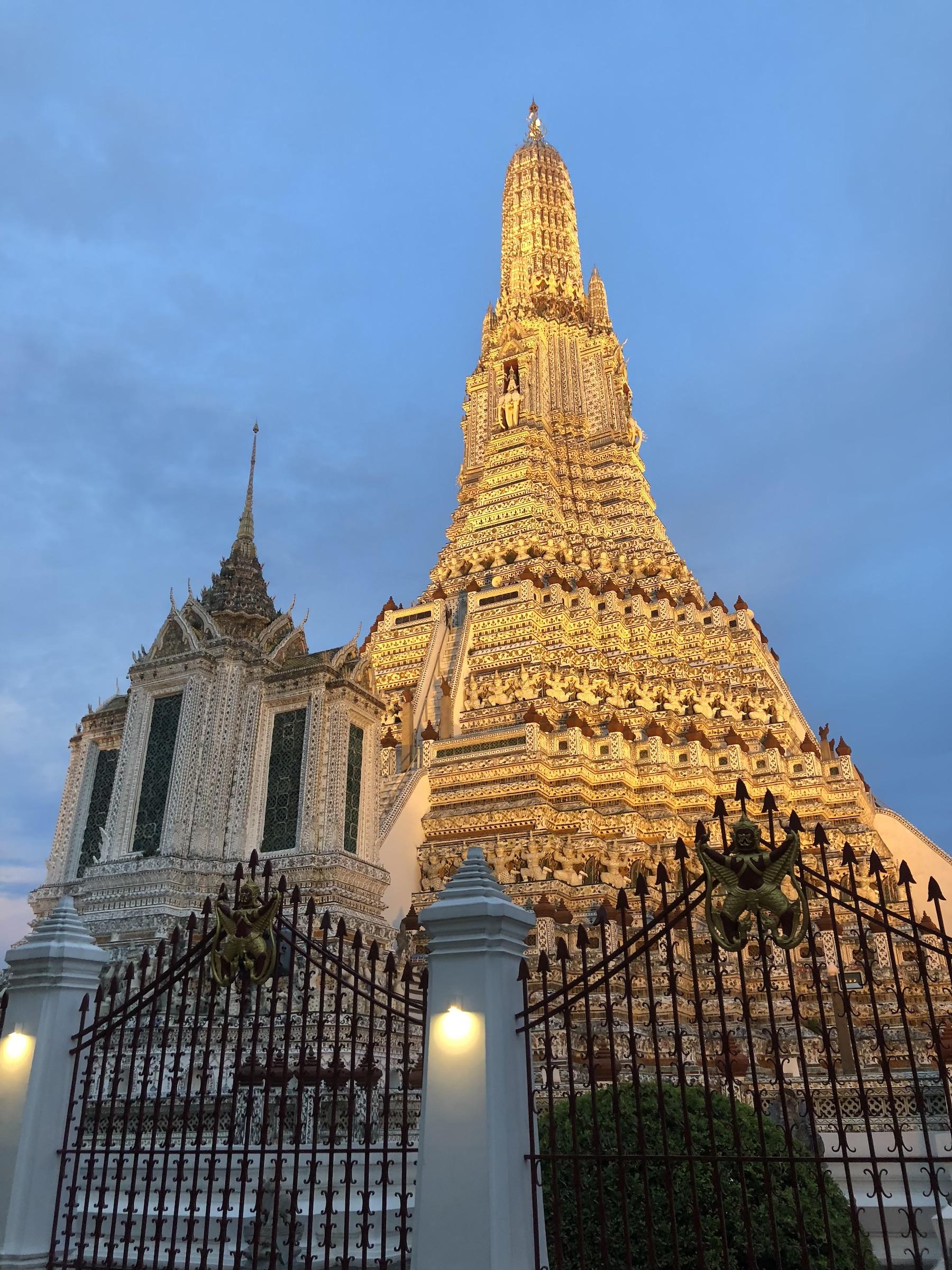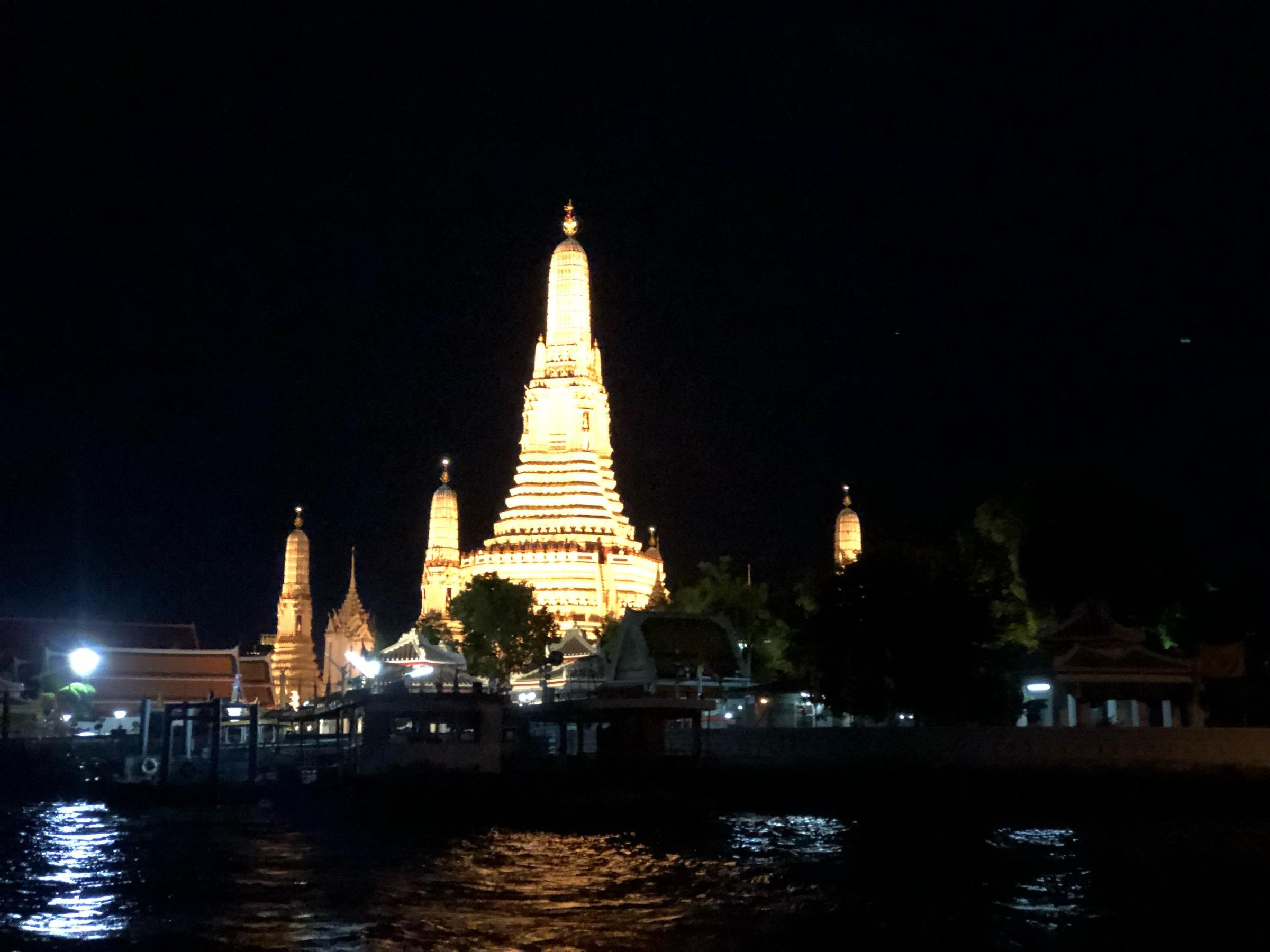
How to Get Around Bangkok

Bangkok’s enormous size is matched by an equally long list of ways to get around the city. Of course, you could take the easy way out and download Grab (the Southeast Asian version of Uber) and use it exclusively to traverse the capital, but hopping on public transportation will give you an insight into how locals actually move about their city, plus it’s cheaper and a lot more fun!
Skytrain (BTS)

The Skytrain, or BTS, will be your first introduction to public transit if you enter Bangkok by air. The Skytrain, which is essentially an above-ground subway, has a line that takes you directly to and from Suvarnabhumi Airport (BKK). It runs every 15 minutes and only costs 45 baht ($1.35 US); a taxi could easily cost you more than 40 times this amount! Also note that there are two major airports in Bangkok, but most international flights arrive at BKK. Make sure you’re paying attention if you’re booking a contacting domestic flight: it may be departing from Don Mueang (DMK).
Aside from the airport line, there are also two other Skytrain lines that form an X across the city. To ride the Skytrain, you will need to purchase a plastic, reloadable card that will deduct money depending on the distance you travel. One downfall of the public transportation network in Bangkok is that each mode takes a separate type of payment. The Skytrain card is only good for the Skytrain. You won’t be able to use it on the subway, buses or express boats.
Buses

The cheapest way to get around Bangkok is by bus- many tickets cost as low a 6 baht (18 cents US), but the bus network is vast and often confusing to those not used to the system. As you can see in the photo above, this Line 68 bus only has the stops listed in Thai, making this not the most tourist-friendly option. Traffic is often a beast in Bangkok and you could wind up spending half your day sitting on a bus if you’re unlucky. Still, if you take the time to map out a route and ride the bus outside of morning and evening rush hours, the buses can be a great way to move about Bangkok.
Subway (MRT)
I didn’t take the subway when I visited Bangkok as it wasn’t convenient to any of the locations I planned to visit. There is only one line and it runs in circular loop in the central/eastern portions of the city. There are plans to expand the subway to link it to the western half of the city where a majority of the tourist attractions lie. The price is right at only 16 baht per ride.
Tuk-Tuk

A Tuk-Tuk is an open-air, three-wheeled vehicle that is kind of a cross between a scooter and jeep. They don’t move very quickly and most Tuk-Tuk drivers seem to target tourists rather than locals when hawking their services. I guess the allure is that you can have a scenic ride through Bangkok if you’re too lazy to walk and want to snap some photos of the famous temples and monuments, but it could cost you a pretty penny to do so.
There are a million Tuk-Tuk scams, so do be on alert if you opt to take one. Many of the drivers speak English and will show you a limited map of the city with three or four main attractions that they will promise to take you to. (They will often lie and say the attractions are closed to the public today, but they know someone how can get you in. Don’t believe them.) You need to agree on a price ahead of time. If not, they will quote you an outrageous sum at the end of the trip that you will be forced to pay.
The other trick that will occur is that they will bring you to various shops/restaurants run by a “friend” who can give you a “good deal” on their mass-produced crap. I have heard many stories of gullible saps being forced to buy lots of junk under extreme pressure by the drivers to appease their “friends.” (The drivers, of course, receive a cut of the overinflated profits.)
Perhaps you will feel the need to take a Tuk-Tuk to cross it off your Southeast Asian bucket list or just for the novelty of it, but personally I found it overrated and would place it on the “skip it” pile.
Express Boats

On the other hand, the express boats are awesome! Most only run during the day and cost between 10-20 baht, depending on the distance. There are two main lines: the Chao Phraya boats run north to south and the Khlong Saen Seb route goes east to west. Like their name suggests, the boats are a fast and efficient way to navigate the rivers and canals that cut through Bangkok.

The boats have different color flags (blue, orange, yellow, green or no flag, which means it makes all local stops) that will let you know the price and which stops the boat will hit. There are easy to follow maps at each stop in both Thai and English. The express boats are easily the most unique way to get around the capital.
Dusit

To segue into how easily public transportation can enhance your excursion into Bangkok, let’s take a look at the Dusit and Thonburi neighborhoods and how you can easily link a visit from the two from the afternoon into the evening.
Dusit is the administrative center of Bangkok. As the royal family began to outgrow the confines of the Grand Palace, Rama V began developing the Dusit quarter in the late 1890s to act as the new royal residence. He constructed the Dusit Palace, which is still the home of Rama X today, as well as the Vimanmek Mansion (the largest structure made completely out of teak wood in the world), the National Assembly, the Ananta Samakhom Throne Hall and Wat Benchamaphobit all within the confines of the district. Today, the Bangkok Zoo can also be found right across from the King’s Palace in Dusit.
Above is a photo of the Royal Plaza, which has a statue of Rama V as its centerpiece. The fifth king of modern Thailand is seen by many as the ruler who modernized the nation and brought many technological advancements and societal reforms to the people. Many of the older generation still greatly revere Rama V and every Tuesday they bring flowers and place them at the foot of the statue.

Behind the Royal Plaza is the Ananta Samakhom Throne Hall, commissioned by Rama V in 1908. Always interested in European architectural styles, the king had the hall, which would be used for receiving foreign dignitaries and world leaders, designed in an Italian renaissance style and fashioned its walls from Italian marble. Until recently, the Throne Hall and the Vimanmek Mansion housed museums and were open to the public. They were both closed during my visit, and at the date of my writing this post have yet to reopen.
Wat Benchamabophit

One of Dusit’s most popular attractions is Wat Benchamabophit, or Wat Ben to locals. This temple was built by Rama V in 1899 and has a curious mix of classic Thai architecture and European design elements. Sometimes called the marble temple, all of the white marble was imported from Italy for its construction.

Again, you can see the Thai/European blend of styles in the singhas, or mythical lions, that guard Wat Ben. The figures are derived from Thai mythology, but the sculpting style is straight out of the Italian renaissance school.

The ashes of Rama V are buried under the Buddha in the main ordination hall of the temple.

Another European feature found in Wat Ben are the stained glass windows of the ordination hall. Rama V employed European techniques, but the colors and imagery are strictly Thai.

Due to the sacred and celebrated status of Wat Ben, it is featured on the back of the 5 baht coin. The grounds behind the temple are filled with wind chimes and drums, the latter of which are played by the monks during ceremonies and prayers. This creates a musical and meditative environment in which one can while away an afternoon.

Once you have explored Dusit, it is only natural to think about popping over to the left bank of the Chao Phraya River to visit Wat Arun in the Thonburi district. But how can you get there? That’s right- take the express boat a few stops and hop off right in front of the temple.
Wat Arun

Wat Arun, meaning the Temple of the Dawn, is named after Aruna, the Indian god of the dawn. After the sacking of the former capital, Ayutthaya, by the Burmese, King Taksin sailed south down the Chao Phraya River in search of a fresh spot to establish a new capital city. A small shrine stood on the spot where Wat Arun now rests and when Taksin saw the shrine glittering in the dawn’s light, he told his men that this is the place where they should set down roots. Thonburi became the site of the new royal palace and Wat Arun was built to house the Emerald Buddha.

When Rama I lead the coup against King Taksin, which ended with the latter beheaded and the former moving the royal palace across the river to Ratanakosin, Thonburi dropped in status and has since morphed into a rather industrial area of the capital. The Emerald Buddha was moved from Wat Arun to the Grand Palace and the temple fell by the wayside. It wasn’t until 1851, when Rama III completed the main prang, which towers 82m (269ft) and dominates the skyline of Thonburi, that Wat Arun was once again put on the map.

Wat Arun is famous for the porcelain tiles that cover every inch of the temple. The prang itself represents Mount Meru, the mythical home of the gods and the different levels of the heavens that stretch into the clouds.

The four smaller prangs in each corner of the temple represent the four main events of the Buddha’s life: his birth, first meditation, first sermon and his death.

The grounds of Wat Arun are extensive; six pavilions dot the riverside where you can find locals unwinding and watching the express boats scurry along the Chao Phraya. A statue of Rama II is the entry way to the gardens that connect the pavilions and other smaller temples that house religious texts.


I highly recommend visiting Wat in the early evening. As the sun slowly sets and the day turns into night, the temple transforms into a beacon of light against the black sky. I took some of my favorite photos in Bangkok on the banks of the river during this magical time.





The buses may be a bit tricky to figure out, but I asked the workers at my hostel a nice route to take that would let me see some of the main sites illuminated at night. Map out a route ahead of time so you know what you’re doing, and then take a nighttime excursion to see the city in a whole new light (pun intended).
There’s no need to pay for a fancy tour when you take public transportation for a fraction of the price and get a glimpse into the “real life” of a city’s denizens. I’ll leave you with some images of Bangkok at night, all snapped from a bus for a few baht.









